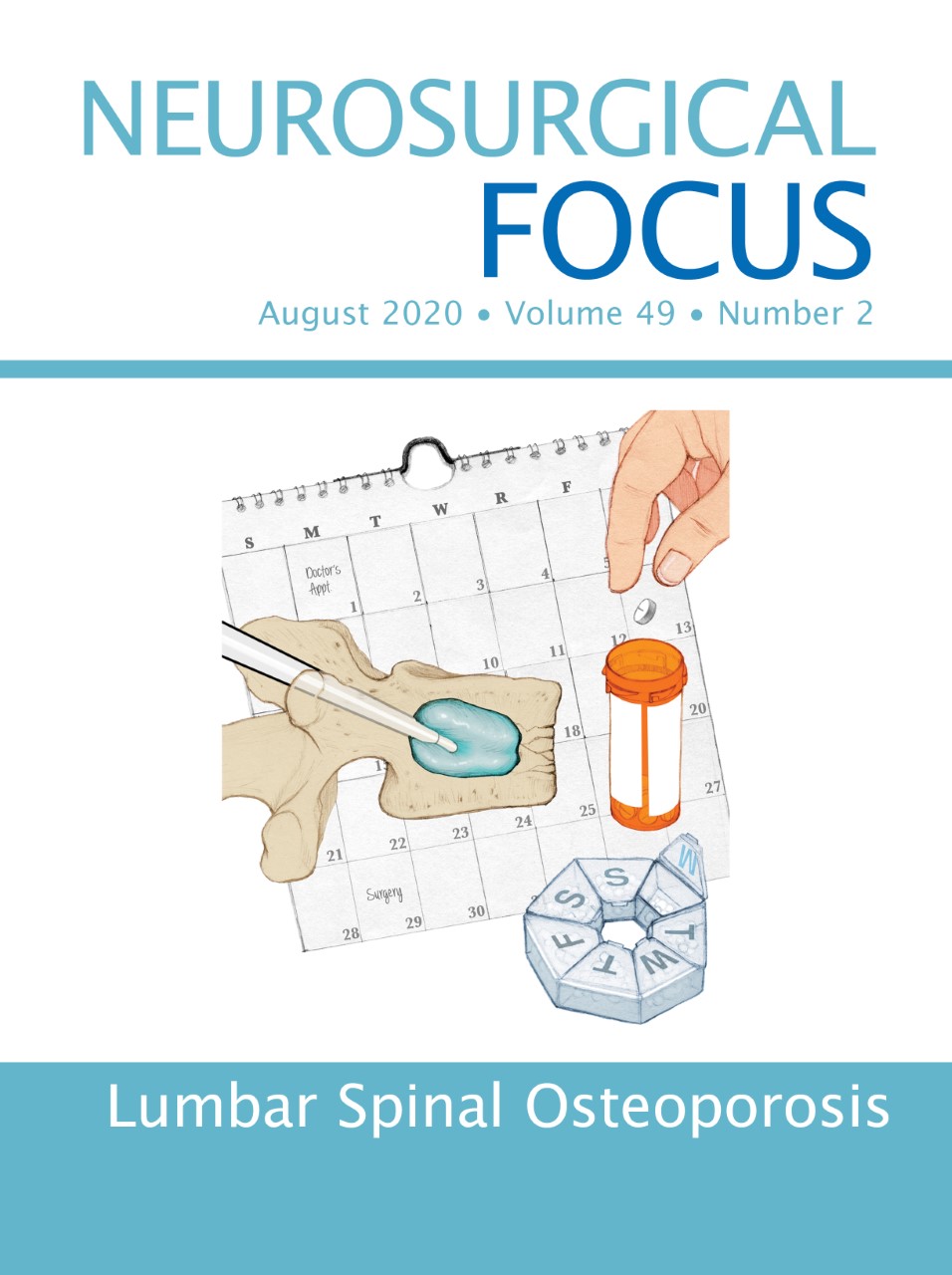Articles in this issue address the challenges encountered when elective lumbar spine surgery is performed in patients with osteoporosis. Identification of poor bone quality using quantitative computed tomography and magnetic resonance imaging as well as dual-energy x-ray absorptiometry, preoperative medical treatments to optimize bone quality, timing of surgery, and adjustments to surgical procedures to manage osteoporosis are discussed.
The following articles can be found in the August issue:
- “Introduction: Lumbar spinal osteoporosis” by Paul A. Anderson et al.
- “Preoperative bone health assessment and optimization in spine surgery” by Paul A. Anderson et al.
- “Editorial: Is preoperative bone health assessment and optimization in spine surgery a good idea?” by Timothy F. Witham et al.
- “Osteoporosis in spine surgery patients: what is the best way to diagnose osteoporosis in this population?” by Jeffery D. St. Jeor et al.
- “Prevalence of osteoporosis and osteopenia diagnosed using quantitative CT in 296 consecutive lumbar fusion patients” by Brandon B. Carlson et al.
- “Association of osteopenia and osteoporosis with higher rates of pseudarthrosis and revision surgery in adult patients undergoing single-level lumbar fusion” by Syed I. Khalid et al.
- “The association between lower Hounsfield units of the upper instrumented vertebra and proximal junctional kyphosis in adult spinal deformity surgery with a minimum 2-year follow-up” by Ping-Guo Duan et al.
- “The association between lower Hounsfield units on computed tomography and cage subsidence after lateral lumbar interbody fusion” by Zhuo Xi et al.
- “Lumbar disc height and vertebral Hounsfield units: association with interbody cage subsidence” by Alfred J. Pisano et al.
- “Hounsfield units of the vertebral body and pedicle as predictors of pedicle screw loosening after degenerative lumbar spine surgery” by Fei Xu et al.
- “Regional improvements in lumbosacropelvic Hounsfield units following teriparatide treatment” by Patrick M. Flanigan et al.
- “Does the use of preoperative bisphosphonates in patients with osteopenia and osteoporosis affect lumbar fusion rates? Analysis from a national spine registry” by Kern H. Guppy et al.
- “Editorial: Bisphosphonates do not impair spinal fusion” by Paul A. Anderson and Brett A. Freedman
- “Minimally invasive spinal fixation in an aging population with osteoporosis: clinical and radiological outcomes and safety of expandable screws versus fenestrated screws augmented with polymethylmethacrylate” by Roberto Gazzeri et al.
- “Association between timing of kyphoplasty and opioid prescribing risk after vertebral fracture” by Jay K. Nathan et al.
- “Do we underdiagnose osteoporosis in patients with pyogenic spondylodiscitis?” by Christoph Bettag et al.
Please join us in reading the August issue of Neurosurgical Focus and keep up with the latest news on lumbar spinal osteoporosis.
***
For additional information, please contact Ms. Jo Ann M. Eliason, Communications Manager, Journal of Neurosurgery Publishing Group, One Morton Drive, Suite 200, Charlottesville, VA 22903; Email: [email protected] Phone 434-982-1209.
Neurosurgical Focus, an online-only, monthly, peer-reviewed journal, covers a different neurosurgery-related topic in depth each month and is available free to all readers at http://www.thejns.org. Enhanced by color images and video clips, each issue constitutes a state-of-the-art “textbook chapter” in the field of neurosurgery. Neurosurgical Focus is one of five journals published by the JNS Publishing Group, the scholarly journal division of the American Association of Neurological Surgeons. Other peer-reviewed journals published by the JNS Publishing Group each month include the Journal of Neurosurgery, the Journal of Neurosurgery: Spine, the Journal of Neurosurgery: Pediatrics, and Neurosurgical Focus: Video. All five journals can be accessed at www.thejns.org.
Founded in 1931 as the Harvey Cushing Society, the American Association of Neurological Surgeons (AANS) is a scientific and educational association with more than 10,000 members worldwide. The AANS is dedicated to advancing the specialty of neurological surgery in order to provide the highest quality of neurosurgical care to the public. All active members of the AANS are certified by the American Board of Neurological Surgery, the Royal College of Physicians and Surgeons (Neurosurgery) of Canada, or the Mexican Council of Neurological Surgery, AC. Neurological surgery is the medical specialty concerned with the prevention, diagnosis, treatment, and rehabilitation of disorders that affect the entire nervous system including the brain, spinal column, spinal cord, and peripheral nerves. For more information, visit www.AANS.org.
Original post https://alertarticles.info


